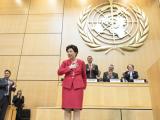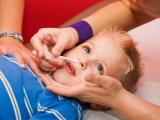Oct 9, 2009
Pandemic flu still on rise in Northern Hemisphere
The spread of pandemic influenza and rates of flu-like illness continue to climb in many regions of the Northern Hemisphere, according to today's World Health Organization (WHO) weekly update. Early flu transmission continues to increase in many European and Asian countries, while the Southern Hemisphere continues to see a substantial decline. The WHO reports little change with the virus, which has caused at least 4,525 global deaths, up more than 400 from the week before.
http://www.who.int/csr/don/2009_10_09/en/index.html
WHO H1N1 update 69
Lack of case counts blunts assessment of flu impact
The fact that US and other countries' officials have stopped keeping close track of novel H1N1 cases and deaths means the government doesn't have a clear grasp of how hard the pandemic is affecting various groups, said flu expert Andrew Pekosz of Johns Hopkins University, according to the Associated Press (AP). H1N1 appears to be more dangerous for children, young adults, pregnant women, and the obese, but just how dangerous is hard to discern because of this lack of comprehensive data.
UK H1N1 cases fewer than feared
Britain reported about 18,000 new pandemic H1N1 cases last week, up from 14,000 the previous week and 9,000 the week before that, according to the Nursing Times. However, flu spread is nowhere near the doubling that some had predicted. Sir Liam Donaldson, the UK's chief medical officer, said, "We may be able to get the vaccine out there before our flu season really gets under way."
http://www.nursingtimes.net/whats-new-in-nursing/swine-flu/swine-flu-cases-fewer-than-feared/5007173.article
Oct 9 Nursing Times article
Vaccine for public to trickle in to Minnesota
H1N1 flu shots for the general public are scheduled to arrive in Minnesota next week, but not enough to meet demand, according to the Minneapolis Star Tribune.The state health department will distribute the 30,000 doses and the following week's supply randomly to clinics that care for the state's sickest children. An official said shipments should grow to 100,000 to 150,000 doses by late October, but the slow supply may mean many high-risk patients might not get vaccine till mid November.
http://www.startribune.com/lifestyle/health/virus/63818147.html
Oct 9 Star Tribune report
Hospital gives workers two choices: shot or mask
An Arkansas hospital has devised an alternative to mandating pandemic vaccine for its employees: It gives them a choice between vaccine and wearing a mask. And nearly all 3,200 St. Vincent Health System workers opted for the vaccine; only six chose the mask. A spokesperson said the hospital devised the policy to protect both the public's and its employees' health.
http://www.rdmag.com/News/FeedsAP/2009/10/life-sciences-most-st-vincent-workers-get-flu-shot-over-mask
Oct 7 AP story
Most Canadians unconcerned about H1N1
Only a third of Canadians plan to get vaccinated against novel H1N1 flu, and few seem concerned about the pandemic, a recent poll indicated. The Canadian Press Harris-Decima poll, conducted Oct 1 to 5, found that 36% of respondents were either very concerned or somewhat concerned about the virus, while nearly two thirds were not very or not at all concerned. In the same poll in late August, 45% had planned to get an H1N1 flu shot.



















